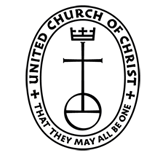I Have Seen the Lord – Easter Sermon April 4, 2010
Easter Sunday – April 4, 2010
Scripture: John 20: 1-18
Early on the first day of the week, while it was still dark, Mary Magdalene came to the tomb and saw that the stone had been removed from the tomb. So she ran and went to Simon Peter and the other disciple, the one whom Jesus loved, and said to them, “They have taken the Lord out of the tomb, and we do not know where they have laid him.” Then Peter and the other disciple set out and went toward the tomb. The two were running together, but the other disciple outran Peter and reached the tomb first. He bent down to look in and saw the linen wrappings lying there, but he did not go in. Then Simon Peter came, following him, and went into the tomb. He saw the linen wrappings lying there, and the cloth that had been on Jesus’ head, not lying with the linen wrappings but rolled up in a place by itself. Then the other disciple, who reached the tomb first, also went in, and he saw and believed; for as yet they did not understand the scripture, that he must rise from the dead. Then the disciples returned to their homes.
But Mary stood weeping outside the tomb. As she wept, she bent over to look into the tomb; and she saw two angels in white, sitting where the body of Jesus had been lying, one at the head and the other at the feet. They said to her, “Woman, why are you weeping?” She said to them, “They have taken away my Lord, and I do not know where they have laid him.” When she had said this, she turned around and saw Jesus standing there, but she did not know that it was Jesus. Jesus said to her, “Woman, why are you weeping? Whom are you looking for?” Supposing him to be the gardener, she said to him, “Sir, if you have carried him away, tell me where you have laid him, and I will take him away.” Jesus said to her, “Mary!” She turned and said to him in Hebrew, “Rabbouni!” (which means Teacher). Jesus said to her, “Do not hold on to me, because I have not yet ascended to the Father. But go to my brothers and say to them, ‘I am ascending to my Father and your Father, to my God and your God.’” Mary Magdalene went and announced to the disciples, “I have seen the Lord”; and she told them that he had said these things to her.
Sermon: I Have Seen the Lord by Rev. DoreenOughton
Okay, so I’m going to open with a reference to a television show I like to watch – Sex and the City. The character Charlotte is a very proper woman, a bit of a perfectionist, and she likes things to be just so. And her wedding to her beloved Harry is not going so well. Initially excited that their wedding announcement made the NY Times, she is horrified that an ink smudge gives her a mustache in the photo. When her bridesmaid Samantha is walking down the aisle, her pearl bracelet breaks, and Charlotte slips on the pearls as she reaches the alter. Later at the reception, Harry spills red wine on her dress, and while the maid of honor gives the toast, her notes catch fire. Charlotte is in the bathroom crying when her friend Carrie walks in. “This day is ruined, my wedding is terrible,” she cries to her. Carrie catches her up. “Charlotte, this is a good day, the best day. Harry was there to catch you when you slipped. Do you know how hard it is to find someone like that? You’re getting married to a great guy, and you are missing it.”
Sometimes, in our focus on how things are supposed to be, we miss the gift that is right before our eyes. It is like that for Mary in today’s gospel reading. She has been through so much the past few days – hearing of, or perhaps even witnessing Jesus’ arrest. Following all the way to the foot of his cross, witnessing his intense suffering, his death. Being with his mother Mary, grieving her son. How does one absorb all this? She honors the Sabbath, staying put, but, restless in her sorrow and grief, slips away first chance she gets. She heads out while it is still dark, into the silence, the crisp night air, perhaps hoping it will clear a little the fog of her grief. What is she thinking as she heads to his tomb? Why do we go to grave sites? To talk to the deceased, perhaps to pray, to be near the place where the body lays. To leave something to honor them, some flowers, a poem, something. In this gospel, the body has been cared for according to the tradition, oiled and spiced and wrapped, so she is not going to do any practical work. Just to be with her friend and teacher, her Rabbonai.
And when she finds the stone moved, it shocks her, triggers an anger, I would suppose, an outrage. Because she is sure about what must have happened. Someone must have taken his body. How outrageous. As if her dear lord did not suffer enough in his life, they have to desecrate him like this after his death?! And how much more could his family and followers take?! My God! And in our world of cause and effect, logic and rules of order, Mary’s assumption seems spot on. What other explanation could there be? And we always want an explanation.
We want an explanation in our own times of darkness and sorrow, when our hopes have been dashed, when we’ve lost a job or a home. When our body fails us, when our child gets sick, really, really sick. We ask over and over again, why?, when our parent or grandparent dies far too soon, when all the savings we’ve worked so hard to accumulate are wiped out by forces beyond our control. When our marriage is in crisis, or ends, when out child ends up in trouble with drugs or alcohol, or the law. And the explanations we come up with? The usual ones are bad luck, bad timing, bad genes, bad planning, bad parenting, bad people – ourselves or others. It all confirms the badness of what we are going through, the terrible events that have befallen us.
What other explanation could there be? And so Mary runs back to those who have been so harmed along with her, sharing her outrage – listen to this! They’ve stolen his body! We don’t know where they have taken him! Simon Peter and the other are quick to join Mary in her outrage as they race to the tomb, and confirm her suspicions. One more bad thing on the heaps of others. But they went in and saw more, saw what Mary hadn’t seen, the burial wrappings left behind. I’m not sure what they made of that. John tells us that the beloved disciple saw and believed, but doesn’t say what he believed. Did he just believe that Mary was right about the empty tomb? Or did he believe that something more was happening here, something he couldn’t quite understand yet?
Anyway, the two men go back to their homes and leave Mary there by herself, crying. Maybe they told her about the linens, and she saw this as just another desecration, that someone would unwrap the body before stealing it. She is so intent on her grieving outrage, her sorrow over all this, that it doesn’t even register that there are two angels sitting in the tomb. She responds immediately to their expressions of concern, as it allows her to give voice to her distress. Likewise she continues on this track at the sudden appearance of Jesus, whom she mistakes for the gardener. “Just tell me where you have taken him.”
It’s always been a puzzle to me, this part of the reading where Mary doesn’t recognize him. My experience is that we tend to catch glimpses of our lost beloved in crowds, in the distance. We are so sure it is them, as the excitement builds, our hearts pound. We think we see them, but they are not really there. In this situation Jesus is standing right there, and she can’t see him. I got some insight, though, into what might be happening from the writings of C.S. Lewis. Maybe the mistaken sightings of our lost ones takes place only after some time has gone by. Mr. Lewis wrote about his experience of grief right after his wife’s death, saying, “No one ever told me that grief felt so like fear. I am not afraid, but the sensation is like being afraid. At other times it feels like being mildly drunk or concussed. There is a sort of invisible blanket between the world and me. I find it hard to take in what anyone says.”
So this is, perhaps, where Mary is, blanketed from her perceptions by her grief, caught up in this fear-like feeling. But finally, in hearing Jesus speak her name, the blanket falls away and she sees what is there, she sees that everything has not been ruined, but that it is a good day, the best day. She sees hat the one she came to grieve, lives. She does a reality check – my teacher, she says. She goes and “holds” him, perhaps an embrace, perhaps she kneels and holds the hem of his garment. The Greek word translated as hold has connotations of clinging. She doesn’t just touch and release, she holds on. Perhaps she is afraid to let go, afraid it is just a figment of her imagination that will disappear if she releases. And so she holds on.
Jesus tells her, do not hold on to me. I’d like to think he doesn’t say this right away, but after a little time has passed, enough for Mary to trust that this is real, that he is standing there talking to her, that she is touching him, truly touching him. With his presence, he is telling her that all that he told them is true. And in John’s gospel, Jesus has told his followers quite a bit. He has told them so much that they didn’t understand now, but that might come back to them, might make sense as they move forward. He told them that he is the good shepherd, and the good shepherd lays down his life for the sheep. He has told them that he would give eternal life, that he is the resurrection and the life, that they would not always have him, that a grain of wheat must fall into the earth and die before it can bear much fruit. He has told them that he came not to judge the world, but to save it. He said before that he must return to the father, that they could not yet follow him. But that he would go and prepare a place for them, for us, and he would send his Holy Spirit.
His intention was never just to prove something – look at me, I’m raised from the dead. There was always a bigger plan. A plan to set something new in motion. His spirit would come to us to guide us, to remind us of him, to help us believe, to help us stand in the hope of his promise, no matter what is going on around us or in our hearts. He did not want Mary to stay stuck in what she knew of him in his earthly ministry. Things have changed. He would not be with her in body, teaching her, comforting her, talking with her. Instead he would be to her far more. There is a new relationship, one that offers her new life, eternal life. And somehow, she gets it, she believes it, and she goes to share this good news. “I have seen the Lord.”
She has seen the Lord, and the Lord is a living God, a living Word that adapts and speaks anew in each age, to each generation. A living God is not static, but continually leads us through the pattern of life, decline, death, resurrection and new life, over and over again. There will always be something we are tempted to cling to, some old knowledge that would keep us stuck, sitting there trying to hold on to something that can’t be held. We can let go, can’t we, we can trust his word, and we can trust his plan to be oh so much more than we can dream of. And perhaps we, too, like Mary, will find our hearts bursting to share the news, “I have seen the Lord.” May it be so. Happy Easter.








